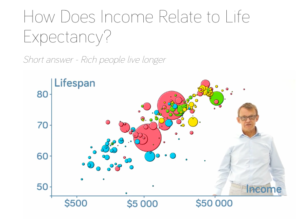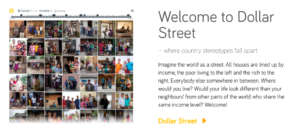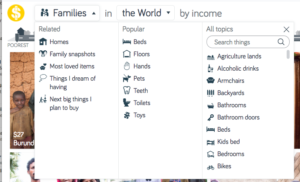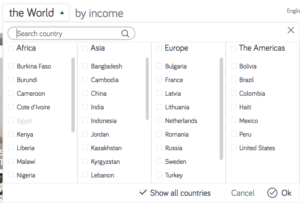When we integrate social studies and literature, one of our big goals is to help students gain a global perspective. Many of our students have never traveled outside their own city or state, so when we talk about other countries and other parts of the world, they have a hard time identifying with them. 
We really want students to be able to understand someone else’s point of view. They can apply this skill in so many areas, even understanding fictional characters (which leads to deeper reading comprehension). By being able to see things from another person’s perspective, students can notice differences and have rich conversations about human and physical characteristics of place that create those differences. These conversations can contribute to a depth of understanding and acceptance of people that are different, but we hope that they will help your students take it a few steps further. By understanding differences, you can become more grounded in your own identity and beliefs. And once students have noticed differences, direct them to start noticing similarities…because there are so many!
![]()
One of the goals of our awesome featured website, GapMinder, is to help fight global ignorance! This might sound harsh, but ignorance simply means a lack of knowledge or information. Many prejudices and stereotypes are born out of this same lack of knowledge, and so by providing this kind of information, GapMinder is combat outdated ideas and preconceived notions with facts that anyone can understand.
 Their site is AMAZING! The charts and graphs are beautiful and can provide hours of conversation as you and your students dive in to interpret the data. Don’t worry if numbers aren’t your thing, though. The site presents some information by posing a question that is answered by the data, such as how does income relate to life expectancy? There is a short (under 2 min.) video explaining the data, a slide show that helps you interpret the chart, and you can download a high-resolution poster of the chart. Awesome! But it gets better…
Their site is AMAZING! The charts and graphs are beautiful and can provide hours of conversation as you and your students dive in to interpret the data. Don’t worry if numbers aren’t your thing, though. The site presents some information by posing a question that is answered by the data, such as how does income relate to life expectancy? There is a short (under 2 min.) video explaining the data, a slide show that helps you interpret the chart, and you can download a high-resolution poster of the chart. Awesome! But it gets better…
 One of my favorite parts about GapMinder, and what I wanted to share with you today, is a tool called Dollar Street. This tool presents snapshots of everyday life around the world and organizes it based on average income. Dollar Street says, “We all have the same needs, but we can afford different solutions. […] Everyday life looks surprisingly similar for people on the same income level across cultures and continents.” So true, and such a GREAT way to start building a global perspective for even the youngest child.
One of my favorite parts about GapMinder, and what I wanted to share with you today, is a tool called Dollar Street. This tool presents snapshots of everyday life around the world and organizes it based on average income. Dollar Street says, “We all have the same needs, but we can afford different solutions. […] Everyday life looks surprisingly similar for people on the same income level across cultures and continents.” So true, and such a GREAT way to start building a global perspective for even the youngest child.
Start by selecting a topic:

Because these are all practical things, you can start making connections with your students’ lives immediately! You might have them bring a picture of whatever topic you select from their home – their pet, bed or favorite toy – and begin by comparing the photographs from your class. You could even have students do a quick writing assignment about that item.
Then take it global by selecting the country or region that you’d like to see:

You can also control the range of incomes that you want to see results for by dragging the sliders along the “street” at the top:

The results are a series of pictures that include the country the family is from and the income of the family:

You can have a great conversation here! Look at similarities and differences. One thing my 4-year-old son noticed right away as Lightning McQueen – he’s universal! You could get a map and locate countries that you see denoted in each picture. Or, you could go deeper into one area. Click on the picture to actually meet the family whose house is featured in the image and learn more about them. Talk about making it personal! Now, it’s not just a bed in the Ukraine, you actually have a face and name to help you make a personal connection. Wow!

Let’s recap:
Social Studies Integration
- Discussion around data – human and physical characteristics of place and how they intertwine and influence each other
- Geography – locate places on a map
- Economics – use images as a spark for researching different a different country’s economy
- Different perspectives – examine stereotypes and prejudices and begin to gather information to combat those
English/Language Arts Integration
- Make connections – have students personally connect by adding their own image to the collection on a certain topic
- Writing – students can write about how their own situation compares/contrasts with what they see in a picture






Leave a Reply